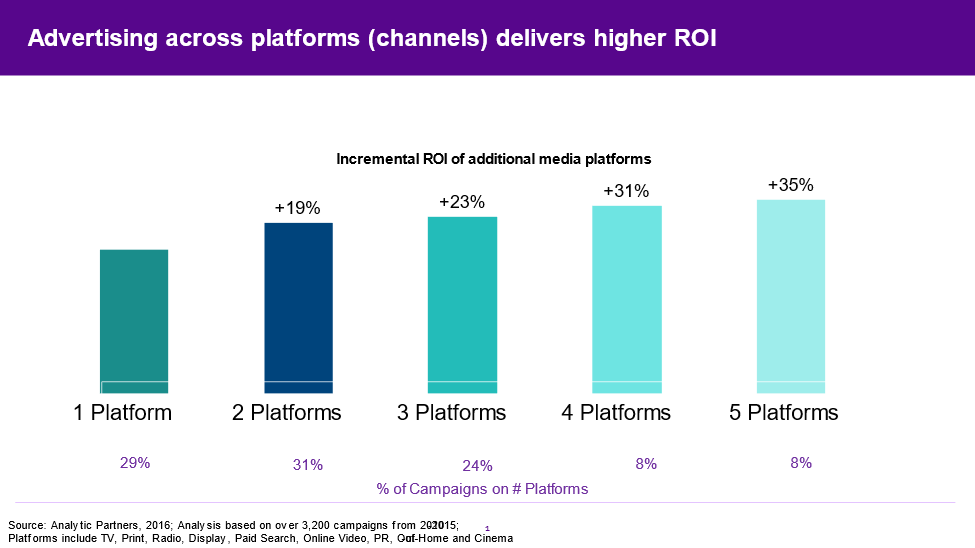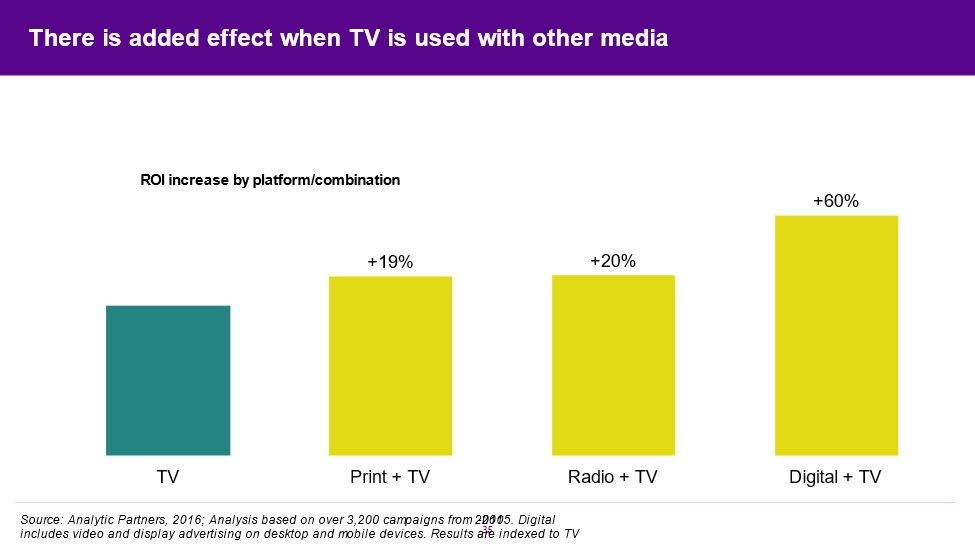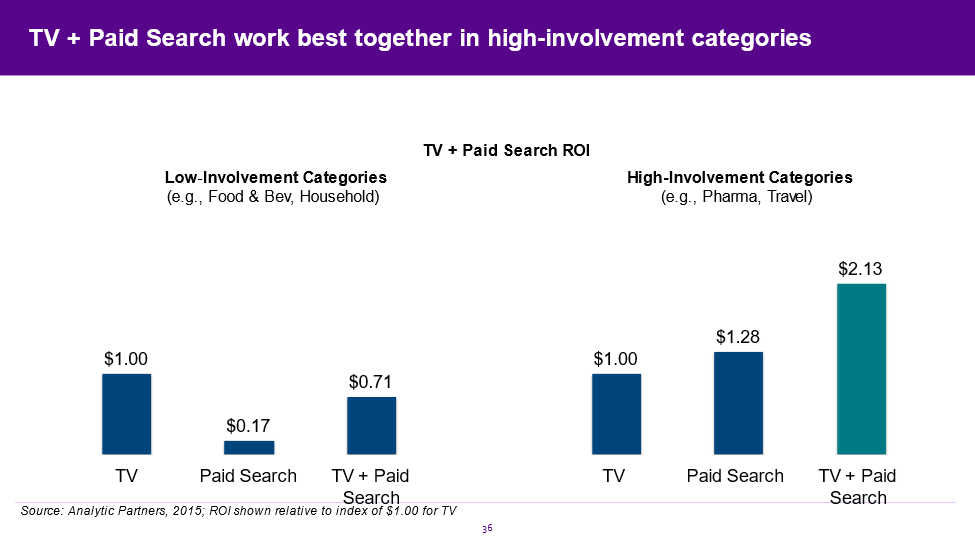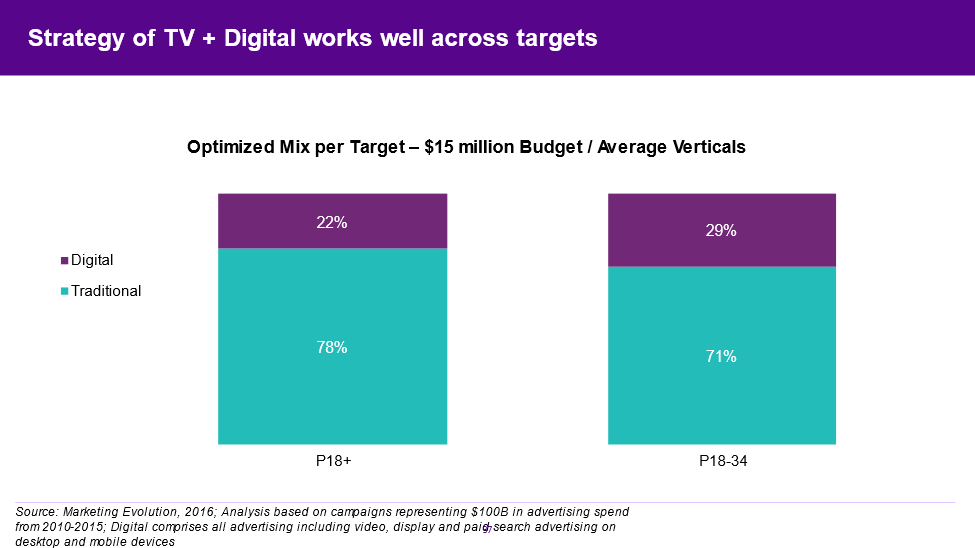The Most Important Media Mix ROI Study of All Time

About a year ago, when I was teaching two sessions of a college class as a visiting professor on Zoom, I was shocked when it became obvious to me that the students felt that they could "do it all" for a brand using only social media.
I was distressed wondering how I could deal with such a naïve viewpoint in the subsequent class, which would be my last opportunity to help these students before they were thrown into the abyss.
Fortunately for me -- and the industry -- the problem had been solved in advance. As is often the case, my/their savior was the Advertising Research Foundation (ARF).
During her tenure as head of the ARF, Gayle Fuguitt and her team had brought about possibly the largest ROI meta-analysis in history. Over 4000 different global case studies of the ROI of advertising, from a blue-chip list of research companies.
The study shows conclusively that the more media you use the greater your ROI will be, all other things (like creative) being equal.
When I saw the results, I was reminded of my first year in the business, sitting in his office captivated by every word that proceeded from the mind of the brilliant Larry Deckinger, Executive Vice President of Grey, my first post. On one occasion I had the temerity to ask if Grey had a way to ensure that we would get a client -- the roster included P&G -- a sales increase. Larry said, "Add a new medium."
That is exactly what the ARF How Advertising Works (HAW) study – also known as "Ground Truth" -- shows.
Let's look at a few slides to see for ourselves. These are the version of the slides I've adapted for the ARF NYU certification course now being offered.




These four slides were eye-opening for the students. They realized that their prejudice in favor of social media was individual to them and their cohort and had blinded them to the reality they would face in their jobs in the real world.
The contribution made by the total study -- far more than these few slides -- has rarely if ever been equaled.
Fuguitt herself is more modest and places the work in line with the ARF Adworks study (powered by IRI Behaviorscan) and by the foundational studies done by the early giants including Beth Lubetkin, Gian Fulgoni, John Malec, George Garrick, Len Lodish and Gerry Eskin. She also credits her ARF team including Horst Stipp and Jasper Snyder. She even credits me for my contribution of TRA cross-platform findings and RMT context effects.
What are the practical implications? Brands and their agencies ought to immediately consider adding more media types, with measurements set up to detect the incremental results. That includes for example radio, outdoor and print.
And the final question. As an industry we are loathe to act on results unless we can explain them to ourselves and believe the explanation. Why does X tactic e.g., more different media, deliver higher sales?
Two reasons:
- Saturation effects, which manifest as the diminishing returns curve. The more one pours additional money into one medium, the less one gets back from the last dollar invested. The classical reach curve. If one switches to another media type when the reach curve starts to flatten and does this again when the second medium flops over, and so on, one is practicing a strategy for maximizing not only reach but ROI.
- Brain encoding. Less is known about this aspect of media mix but serious scientists like Dr. Richard Silberstein believe there is reason to expect that more complex forms of brain encoding would increase the probability of a new brand attribute to make it into long-term memory. There is still work to be done here to verify the hypothesis.
Increase the media inclusiveness. Even if you have been avoiding certain media types for some reason, test its inclusion.
Thousands of research studies can't be too far wrong.
Thanks again, ARF.
Click the social buttons to share this story with colleagues and friends.
The opinions expressed here are the author's views and do not necessarily represent the views of MediaVillage.com/MyersBizNet.


